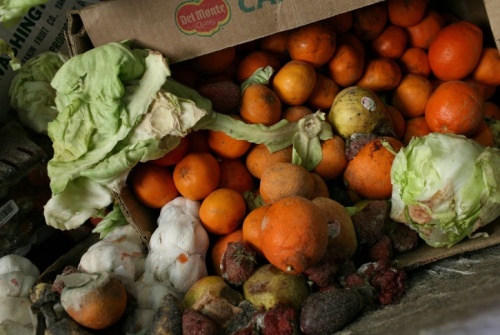
UC Davis Dining Commons Demonstration of what college kids waste for Love Food, Hate Waste in January 2013.
Two days ago, I saw a headline in my news feed that I nearly passed over. It read: “Elimination of trays decreases food waste in dining halls.” All I could think about were the opportunities to trip classmates struggling to carry their milk and dinner plates to a table. And then I decided to read on, and learned that in just two years Manchester University has saved:
- 15,000 pounds of food from becoming waste, and
- 200,000 gallons of water.
How? They removed trays from the dining halls. They removed convenience, and judging from the article it wasn’t a popular solution. But its makes a lot of sense.
If you drive to the supermarket, grab a big shopping cart, and have a lift to carry your groceries from car to home, then it is very easy to just pile unnecessary food into your life. If you have to think about how you are going to carry it all to the car and into your home, you probably make different choices.
I like that one simple decision has changed how an entire community consumes. It would be interesting to see if that same choice also helped students maintain weight. I mean, if not using a tray helps that freshman not gain infamous 15 pounds that many do gain in the first term, wouldn’t they willingly embrace the idea?
If the same could be said about using smaller shopping carts to lose weight, would people be more willing to embrace a small change?






